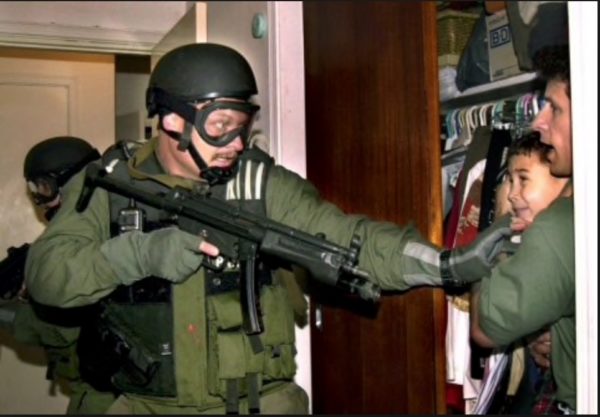Watching the collective media and political class freak out over the “crisis” of immigration enforcement at the border sent me to my bookshelf to dust off Daniel Boorstin’s classic 1961 book, The Image: A Guide to Pseudo-Events in America. Step back for a moment from the whack-a-mole problem of sorting out fact from fiction in this current drama; the way this is playing out is a perfect case study in what Boorstin had in mind.
Boorstin defines a “pseudo-event” as not merely a fact or real event that happened, but a fact or event that is made into “news” of a certain kind by a deliberate and artificial process. You might think of Boorstin’s analysis as no more than the Deep Theory of Public Relations (or as the first analysis of what we today like to call “fake news”), and many of the examples in the book come from the corporate world. Here is some of his description of the dynamics of a “pseudo-event” —see how many aspects of this you can make out in the present controversy:
1. It is not spontaneous, but comes about because someone has planned, planted, or incited it. Typically it is not a train wreck or an earthquake, but an interview. [More on this point in a moment—SH.]
2. It is planted primarily (not always exclusively) for the immediate purpose of being reported or reproduced. Therefore, its occurrence is arranged for the convenience of the reporting or reproducing media. Its success is measured by how widely it is reported. . .
3. Its relation to the underlying reality of the situation is ambiguous. Its interest arises largely from the very ambiguity. . . Without some of this ambiguity a pseudo-event cannot be very interesting.
In the present case, we know that “child separation” from illegal immigrant adults has been going on for a long time, possibly at a scale larger than at the moment. How did this story suddenly blow up the way it did just now? Since the media hadn’t yet toured any detention facilities at the border, where did those first pictures of kids in cages (which turned out to be from 2014) come from?
One reason Boorstin called his book The Image was the central importance he placed on visual imagery in affecting public sentiment—a development he called “the Graphic Revolution.” This is not exactly a new or profound insight and lots of examples come easily to mind (like Eddie Adams’s famous photograph of the Viet Cong guerrilla being shot in the head on the Saigon street during Tet in 1968), but Boorstin combined it with a remarkably prescient anticipation of today’s 24/7 cable TV news cycle:
Then came round-the-clock media. The news gap soon became so narrow that in order to have additional “news” for each new edition or each new broadcast it was necessary to plan in advance the stages by which any available news would be unveiled. . . As the costs of printing and then of broadcasting increased, it became financially necessary to keep the presses always at work and the TV screen always busy. Pressures toward the making of pseudo-events became even stronger. News gathering turned into news making.
The “interview” was a novel way of making news which had come in with the Graphic Revolution.
And voila—we have the environment of today’s cable news industry, which consists chiefly of unending interviews with analysts and pundits, telling us how to think about the news.
In this regard, recall this famous photo of an earlier immigration/refugee controversy from April, 2000:

Among other things and in hindsight, this shocking image of armed federal agents snatching Elian Gonzalez and returning him to Cuba may have cost Al Gore the presidency in the election six months later, as it hardened opinion in Florida’s Cuban community against the Clinton Administration. (Vice President Gore, recall, declared that he opposed this action shortly after it happened. But it was to no avail.)
It is not clear whether the current pull-the-heartstring images of kids behind chain-link fences and sleeping on the floor under space blankets will have the same effect on the iron-willed Trump, but that is the intent behind this pseudo-event. (So far Trump’s poll numbers seem to be holding up or maybe even improving.) News this morning suggests that Trump may be about to issue executive directions to revise or end the child-separation practice, and that Congress may attempt to vote on some related legislation tomorrow. Stay tuned. This pseudo-event has enough built up momentum behind it that the agitators and crisis entrepreneurs won’t let it die down easily or soon.
Notice: All comments are subject to moderation. Our comments are intended to be a forum for civil discourse bearing on the subject under discussion. Commenters who stray beyond the bounds of civility or employ what we deem gratuitous vulgarity in a comment — including, but not limited to, “s***,” “f***,” “a*******,” or one of their many variants — will be banned without further notice in the sole discretion of the site moderator.